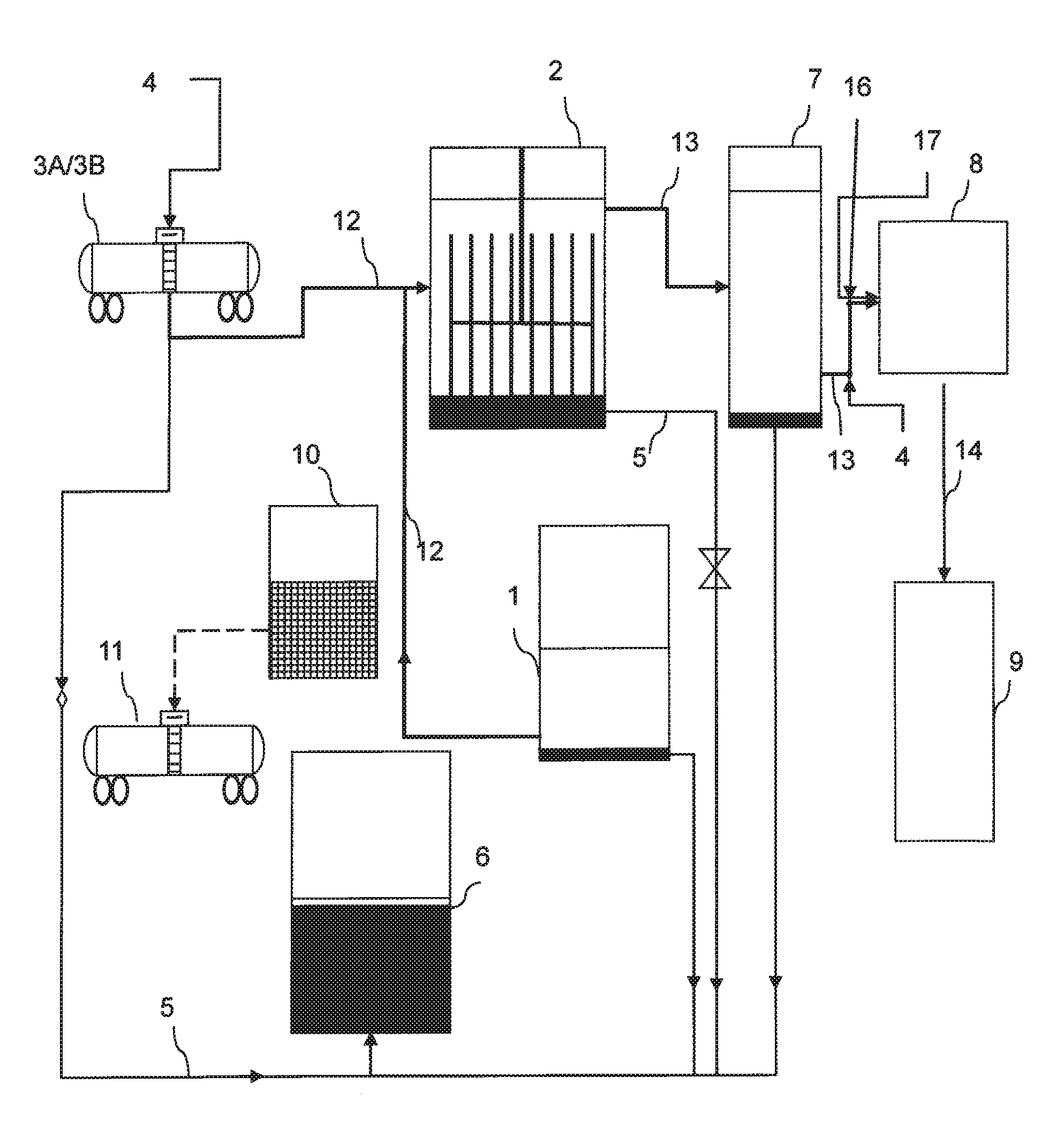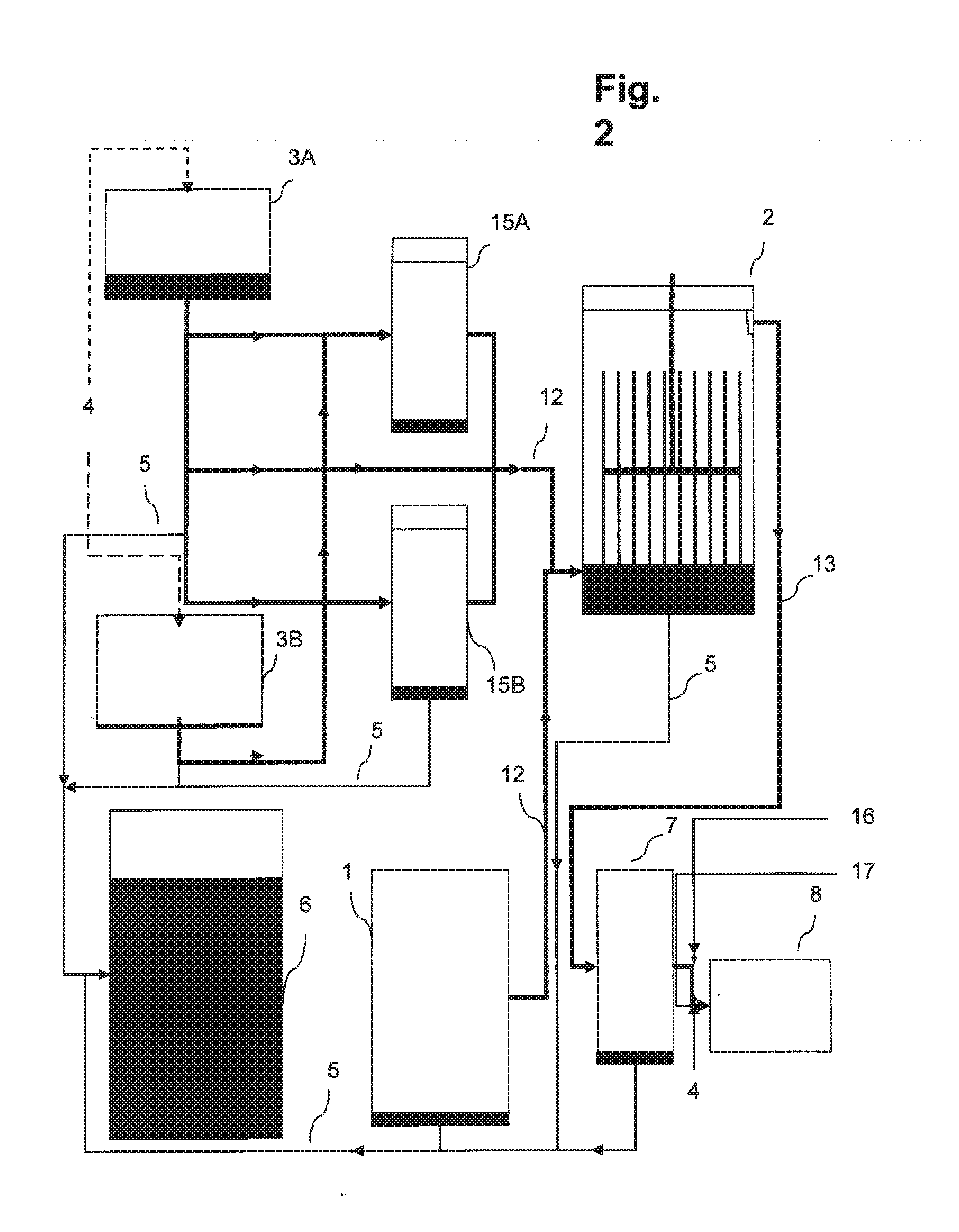Method for producing crude tall oil by soap washing with calcium carbonate removal
a technology of calcium carbonate and soap washing, which is applied in the direction of pulp liquor regeneration, fatty substance recovery, and separation processes, can solve the problems of complex efforts to wash black liquor soap to improve cto separation, unsatisfactory calcium sulfate build-up, and undesirable lignin, so as to avoid process upset
- Summary
- Abstract
- Description
- Claims
- Application Information
AI Technical Summary
Benefits of technology
Problems solved by technology
Method used
Image
Examples
example 2
Calcium in Extracted Brine
[0100]
Calculated Ca in Extracted Brine (ppm) 6,035SolubleInsolubleTotalMini-Maxi-CalciumCalciumCalciummummumppmppmppmMeasured Ca in 5,00015,600807,1777,256Extracted Brine (ppm)Measured Ca in 40040Extracted Brine Supernatant (ppm)Measured Ca in 342,000Extracted Brine Centrifuge Sludge (ppm)
example 3
Determination of (Total) Filterable Solids and Inorganic Filterable Solids in Clean Spent Acid (Adapted from TAPPI T635 om-89)
Total Filterable Solids
[0101]The dean spent add filterable solids determination was performed as described below. To an accurately weighed Buchner filter (approx. 5.8 cm i.d.), a 5.5-cm G6 Fisherbrane® glass fiber filter circle that was maintained in a desiccator was added, and the Buchner filter and filter circle were accurately weighed on an analytical balance, The Buchner filter and the glass fiber filter circle were placed on a 500-mL Erlenmeyer filter flask connected to a vacuum source.
[0102]About 50 mL of a thoroughly agitated sample of dean spent add were poured into a 100-mL beaker that had been tared, and the sample was accurately weighed.
[0103]After wetting the glass fiber circle in the Buchner filter with about 5 mL of de-ionized water, the dean spent add sample in the beaker was poured into the Buchner filter. The beaker was rinsed with de-ionized...
example 4
Prophetic
Determination of (Total) Filterable Solids, Inorganic Filterable Solids and Lignates in Alkaline Tall Oil Plant Brine (adapted from TAPPI T620 cm-83)
[0110]The procedures in the previous example are based upon using clean spent acid, but they can also be performed using alkaline tall oil plant brine. The brine is first acidified to pH 3 (the usual pH of clean spent acid) using reagent grade, concentrated hydrochloric acid, and then the steps as for the clean spent acid are performed as in the previous example. Subtracting the inorganic filterable solids then found from the (total) filterable solids gives the filterable organic solids. The filterable organics are often nearly all lignin and would correspond to the lignates in the alkaline tall oil plant brine (before acidification). A more accurate measure of lignates in the alkaline brine could be found by determining (total) filterable solids with and without first acidifying and calculating. The lignates (noting that the m...
PUM
| Property | Measurement | Unit |
|---|---|---|
| temperature | aaaaa | aaaaa |
| temperature | aaaaa | aaaaa |
| residence time | aaaaa | aaaaa |
Abstract
Description
Claims
Application Information
 Login to View More
Login to View More - R&D
- Intellectual Property
- Life Sciences
- Materials
- Tech Scout
- Unparalleled Data Quality
- Higher Quality Content
- 60% Fewer Hallucinations
Browse by: Latest US Patents, China's latest patents, Technical Efficacy Thesaurus, Application Domain, Technology Topic, Popular Technical Reports.
© 2025 PatSnap. All rights reserved.Legal|Privacy policy|Modern Slavery Act Transparency Statement|Sitemap|About US| Contact US: help@patsnap.com



